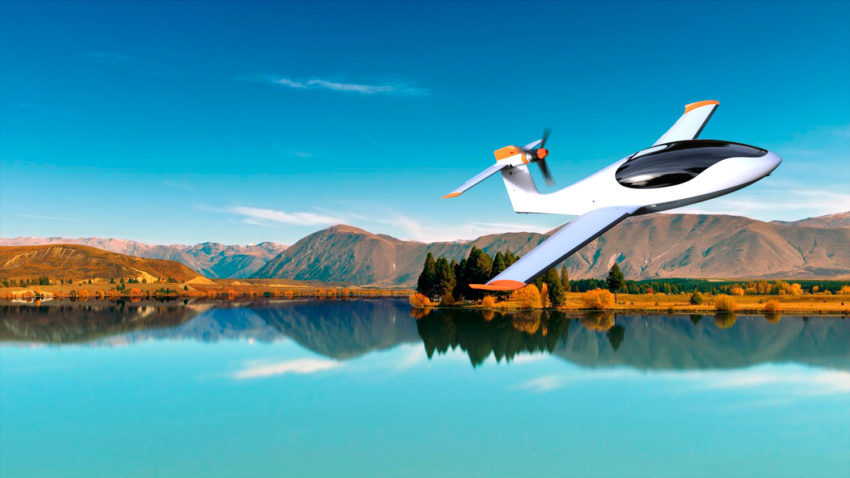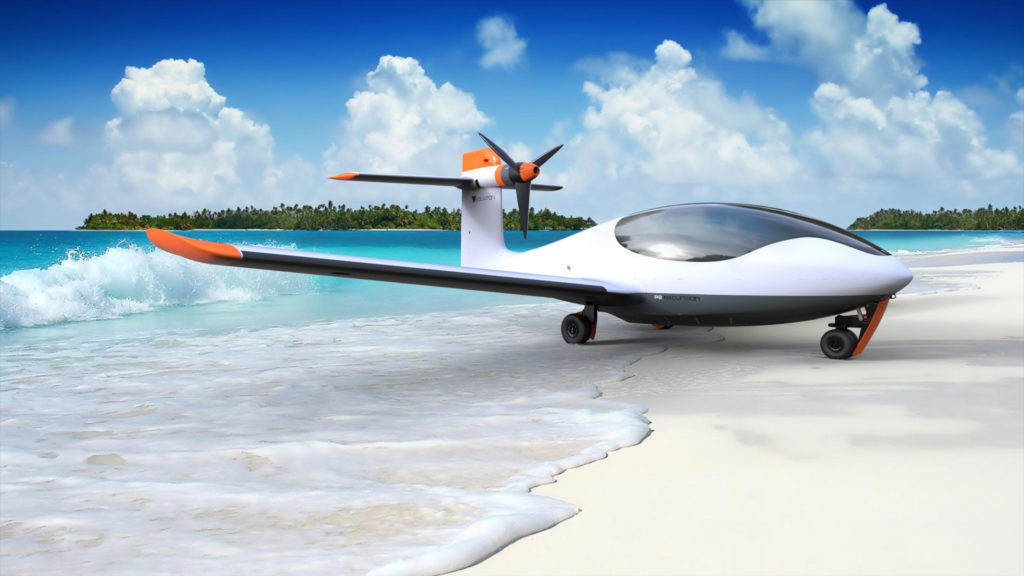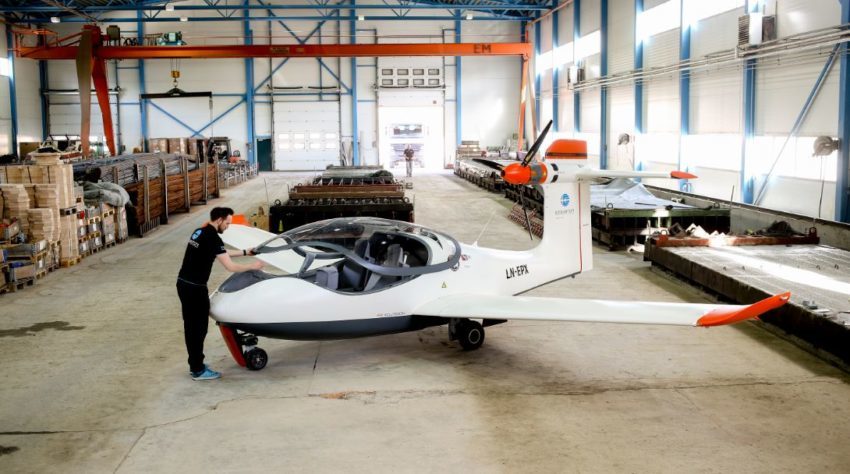Norway is leading the way towards a more sustainable mobility. Already having the largest number per capita of plug-in electric cars, the next step is making aviation sustainable. Norwegian Civil Aviation Authority (Luftfartstilsynet) is already pushing to use electric planes for short haul flight in the future. In this scenario it was not surprise to find someone like Tomas Brødreskift an industrial designer with a strong passion for aviation who has devoted years of his life to the project of building his own aircraft company. He is building a seaplane, the very first electric or hybrid electric seaplane aircraft available on the market. This is what he shared with us in a very interesting interview.
Equator Aircraft has quite a long history, can you tell us more about it?
Tomas Brødreskift: Between 2004 and 2007 I was studying industrial design and at the same time, I was also flying a private aircraft. My family owns an aircraft, so I was getting into both all the processes of creating products – normal product design- and into flying and getting to know how to create aircrafts. At that time, I was really struck by the lack of innovation and the lack of focus on new types of user experiences in aviation. There is a very, limited amount of designers in this industry and as you know, in all industries that have to do with product design, there are always designers involved. But in aviation, it was still not so common to have designers as part of an aircraft project.
This was interesting to me and I saw the opportunity, as a student, to start looking into aircrafts because being able to design airplanes it’s something that I’ve dreamed about since I was six years old. I also love creating things and I like to draw. I’m not really a mathematician, a physics or anything like this. I’m more like a sculpture or a typical designer. I have a lot of respect for the physics and the math, but I’m more into the mechanics and the moving parts and the shaping of things. It seemed impossible for me to get into aviation because of the limited space for designers, but during my studies I did a few trial projects including my first design project of an aircraft.
I was just shocked over the results coming out of this process, because I was using the same type of industrial design process that you would use if you’re creating a vacuum cleaner or any other similar product. By using the same method, a really interesting airplane came out of that process and that’s when I understood that this has never been done before.
When I was studying in Germany for a year, I met this engineer who had designed some interesting airplanes from the sixties, Günter Pöschel. He is about eighty years old now. He became sort of a mentor for me. I was talking with him about his designs and I was interested in his story because it was similar to mine in the sense he didn’t have any formal background in aviation. I saw it was possible to do this and he was telling me all about his travels around the world and what he experienced through his journey to create this company that he called The Equator Aircraft Company back in the seventies.

In the Photo: Rendering of the Equator Seaplane flying. Photo Credit: Equator.
I wanted to carry on his legacy and in his footsteps. I got his company name and I took some of these ideas back to Norway when I started doing my diploma projects which was about the P2 Aircraft. It was based on some of Günter drawings, but I was adding new ideas on how the cockpit could be a, on how the geometry is, or where things should be. When I was done with that diploma, I felt like it was such an interesting concept that I really, couldn’t let it go and I had to continue finding a way to build this aircraft. Of course, when you come out of a college, you don’t have money, nor you don’t have people to do it. So, I really went ahead and started to try to find a way to work as a freelance designer and then just earn enough money to be able to work full time on the aircraft. That meant after having lived as a student for five years, I just had to continue living like that.
Since then, I just tried to gain the resources I needed through the Internet: we got a lot of open source students collaborations going, people that could work on this for free and could get, at least, a good resume and a recommendation from me from the project. I think we had probably forty or fifty people involved during the process. As an industrial designer, I’m lacking a knowledge in areas of aerodynamics and physics and mechanics and things like this. I needed help because I could draw everything, I can design everything in 3D, but I needed people to verify my designs. After a couple of years, I was done with the basic design of the airplane and we started building the aircraft. We started building it in a garage and trying to find cheap ways of using the carbon composite materials and similar stuff. My father got involved quite heavily as well: he’s an engineer and he can complement me on the skill sets and I also got a neighbor involved that has built airplanes before. We were three people with me full time and the two guys in the evenings. We created this corporate company, not a regular stock-based company, but a Norwegian type model. We have a cooperation where people can come in and work a number of hours to get the ownership in the company. The process is very difficult, because we didn’t have the experience, we do trials and errors, learning from our mistakes and moving on.
Having to create the electric and hybrid system was one of the most difficult things. In 2011 we were trying to figure out how we were going to do that, because we could make the airplane but we would have some problems on the hybrid or the electric side. There weren’t any components in the world that I could buy off the shelf. Nor there weren’t any motors that could run a hundred kilowatts, which was what we needed because we were sea plane and land planes. To get out of the water, you need substantial power, so we applied to the Government to get funding. But you know, when you’re sitting there as a twenty-nine years old guy saying: “I’m going to make an electric sea plane”, it’s not something that people believe straight away. It took a long time, and after twenty applications, we got into one program so we could travel around Europe and find some new partners that can help us develop that system. We ended up with a German partner called Engiro GmbH. We felt that they could be good partners and it was also interesting for them to get involved in the aviation sector. We have created a system that we have been working on all the way from 2012 to today. We are doing a pure electric aircraft now but we still want the hybrid to be an option in the future for long range.
We’re still working on it, but it’s taken so long to get to that point. When you think you are 90% percent finished with an airplane, you still have, a lot of work ahead. With the amount of resources we had, it’s taking one step at a time. I’m just going through the process very slowly, that’s why it’s taken basically eight years to get to this point. We completed the aircraft last year and since then we have been tweaking minor details and trying to just make the aircraft flight ready because there are so many things do, for instance aviation authority experts come in, and they need to see proof of every test, proof of every detail you worked on. We have been working on it for the last six months in getting all these documents up to date. We were creative in a garage but we did not really documented everything down to every detail and we had to go back in the process of and kind of get everything documented.
Currently I’ve done three taxi tests where we run the aircraft for up to about 35 minutes. I’ve found quite a lot of small things that I want to make better. I’m doing some improvements now on the control systems and things like this because we’re not only doing a new aircraft, but we’re doing a new propulsion system of course with the electric batteries
In the Photo: Final touches on the Equator Seaplane. Photo Credit: Equator.
Electrifying aviation makes people like you a true pioneer. Building an aircraft is a fairly complex process and it is understandable it has taken you guys some time to work on this.
Yes, electrifying an existing airplane is very different compared to making a completely new airplane. It is also unique in the world that we are doing an electric seaplane that I don’t think I’ve seen before. I really have a strong belief in this future scenario of networks of electric planes flying along the shorelines in the same way it was in Norway in the fifties. Back then, there were a lot of airline companies doing services along the coast. We have a very long coastline, maybe 3,000 plus kilometers and a lot of people living in places where they have to take ferries and drive a long way to get to the cities. This is just an example of where an airplane could cut your troubled time to down to a quarter of the time.
It’s very logical to me to look towards seaplanes as kind of a bridging technology between the aircraft up today and the flying car of tomorrow. I believe there is some space in between there, maybe a 20-25 years timespan where we need different airplanes. That’s where I think Equtor can be a big player, because I think we can build a portfolio of aircrafts: two seats, up to eight or ten seats aircraft with the same type of configuration, and then we’re talking about a lot of different kind of markets and a lot of interesting visions for different countries around the world where they can use our planes in different ways.
RELATED ARTICLES:
![]() Zunum Aero: making electric planes possible
Zunum Aero: making electric planes possible
by Alessandro du Bessé
![]() Ampaire electric planes: Interview with Kevin Noertker
Ampaire electric planes: Interview with Kevin Noertker
by Alessandro du Bessé
![]() Pipistrel: a Game Changer in the Sustainable Aviaton Industry
Pipistrel: a Game Changer in the Sustainable Aviaton Industry
by Alessandro du Bessé
The design of your aircraft is very different than any others, can you tell us more about that?
Implying, or putting in this industrial design process while creating an aircraft is an extremely powerful tool, because people don’t usually build airplanes based on a user centric type of idea. They would go into the process as an engineer and focused much more on other facets like the mission of the airplane rather than focusing on the human being.
That means that they are typically too small, too tight, they don’t have very good air ergonomics. The cockpits are usually very, complex compared to the actual process of flying is. If you put an industrial designer, he or she will always start with the human being as the center of the project and try to figure out what the user needs. My user needs more space and simplified control system.
My plane when it’s in the water it needs to be a boat. We did a lot of research in boats to make the cockpit. The interior carpet is more like a boat than an airplane. It has to be waterproof everywhere, it has to be open so you can move around in the water and that’s why we have this canopy that is so big that can be taken all the way back because it needs to be like a boat and all these things came out of a typical industrial design process. I envision that industrial designers will be much more involved in aviation, in the next years to come because we can show now the process, what kind of outputs the process actually has when you do that kind of design work.

In the Photo: The CEO Tomas Brødreskift and his team. Photo Credit: Equator.
You mentioned both hybrid and electric propulsion. Which will you be using?
TB: When we started the project, we were creating a vehicle that needed to have a range. The aircraft needs to fly more than a thousand kilometers because people that use these types of aircraft, need to be able to go out – let’s say Toronto in Canada and you need to fly into the wilderness and the back – for at least two hours each way. From Norway if you want to get to the fjords and Greenland’s you can’t do that on batteries alone. This vehicle needs to have range and it was always in our thoughts that we need to have a hybrid to be able to do that. We started creating an hybrid, but of course, creating a hybrid means that you’re building a system that is probably way more complex as doing simply batteries. because batteries and electric motors, are very simple. It’s a great thing to work with, because it’s so simple mechanically, but when you put like a combustion engine into the system and you need all of this. The complexity is to a level that when we saw how difficult it was to create a system, we thought, “okay, if we’re going to fly the aircraft within the next two years, we need definitely have to make an electric aircraft”, at least just for the tests. Pure electric, is much simpler and safer. The aircraft could be later converted to a hybrid. It is hybrid-ready, with all the systems that you need. We just joined a new program with the government that I recently figured out which might help take the hybrid system to a commercial level.
I want in the future to be able to deliver an electric version of the aircraft and a hybrid. Customers will choose because if you want to fly just locally for one and a half, two hours, you can do that on batteries. You need to go further and the hybrid will be able to do that. The aircraft will be ready for both scenarios.

In the Photo: Rendering of Equator’s Seaplane flying. Photo Credit: Equator.
Will you be willing to partner with the bigger stakeholder to build this aircraft? Or do you think it can still be something that you do yourself with the funding you can find?
I’m very, open to any sort of offers or partnerships because for me, personally, the goal is to get these aircraft and this type of aircraft out into the world. If I have to partner with an existing company, it is absolutely something I’m open to, but problem is historically big companies don’t partner with startups at this early stage. I haven’t had any sort of discussions with anybody up to now because I think it’s too early basically. I think that we need to go our own way and invest in the tooling and work the way we have done for a while at least.
Once we have increased the whole value of the project, it might be more interesting for partners and other people to get involved. For now, we’ve got a new round of government funding that’s for the hybrid system. We will create a lot of films and media content to try to raise the necessary two and a half million dollars that we need to go to production because it’s not that much money that we need because we’ve done all the research already. We need money to pay a little bigger team for three years and that will be enough to kind of push us to, to having the tools and everything ready to, produce the airplane.











